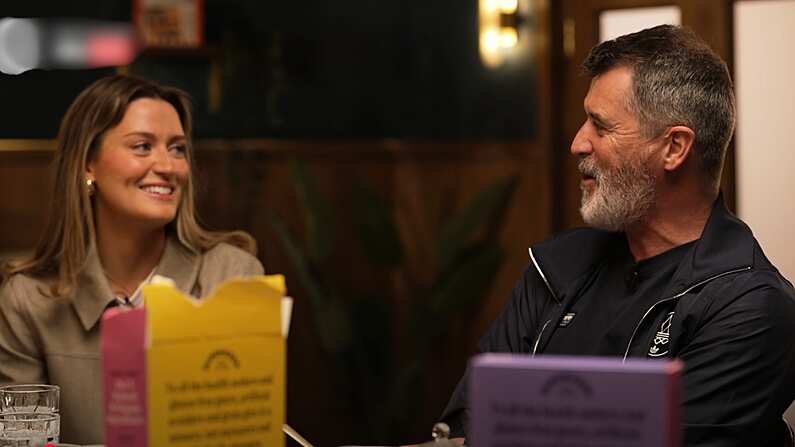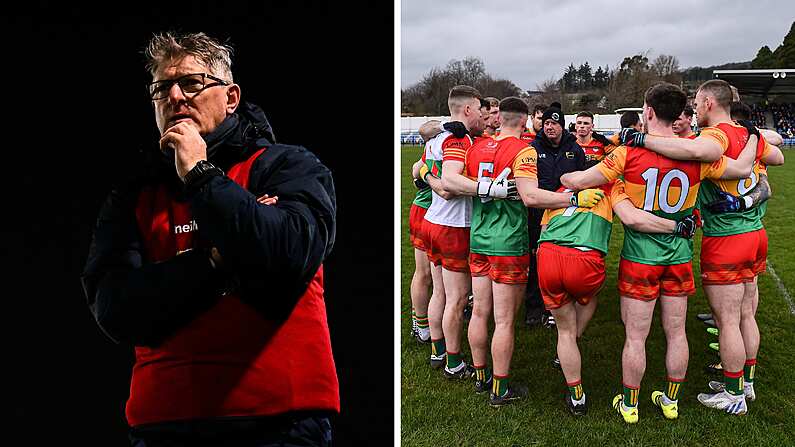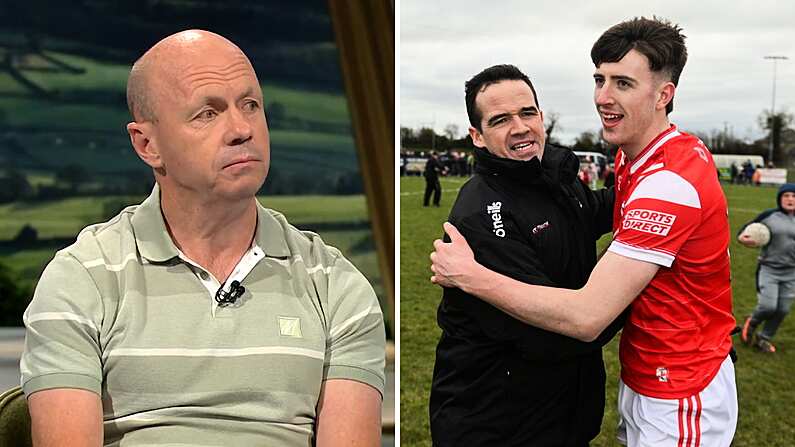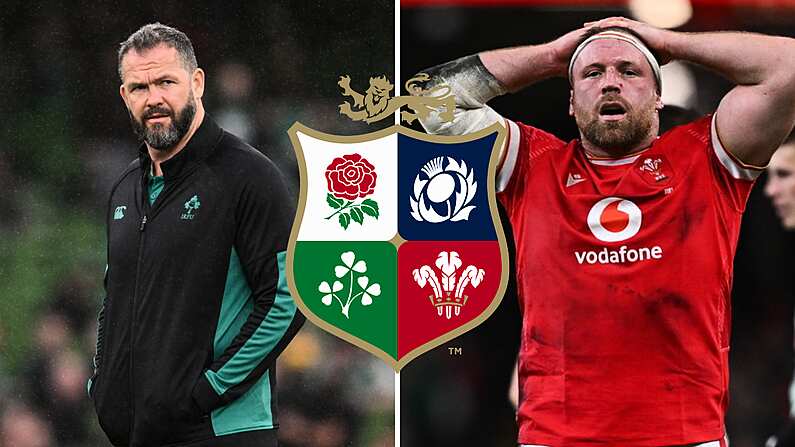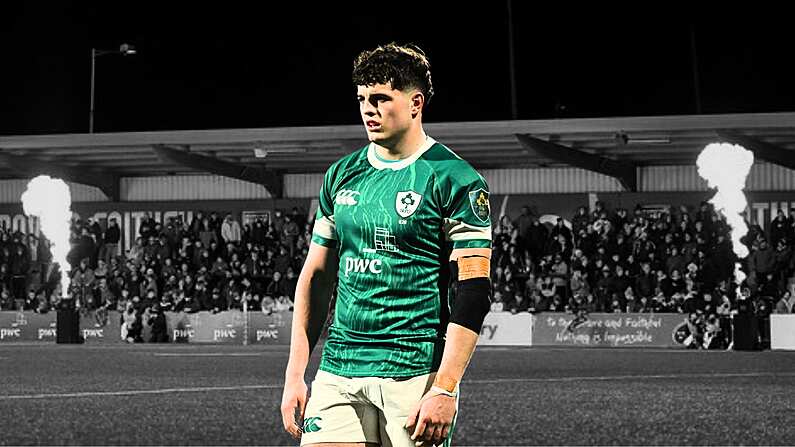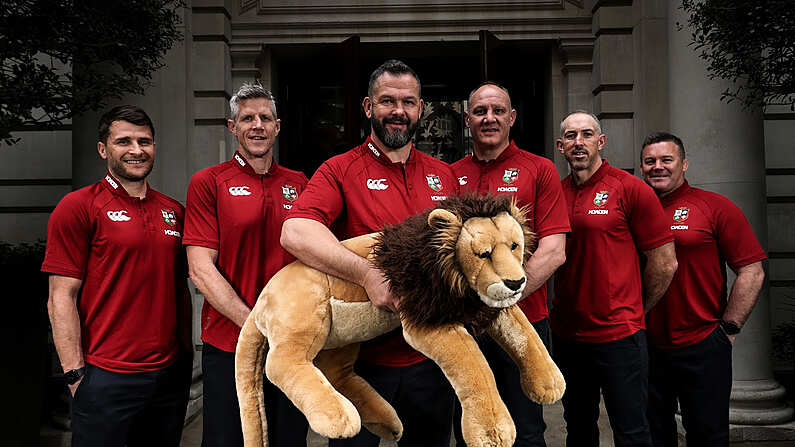It was just not the performance we expected from this talented Ireland side as New Zealand dominated them in almost every area. Even more surprising was that it ended a run of 19 home wins with Ireland’s last defeat in Dublin coming against France in 2021, and you'd need to go back even further, to 2016 against New Zealand, to find their last Autumn International Series loss at home. However, Ireland has now suffered their third defeat in their last five matches.
So what happened on Friday night that caused this latest setback?
Team discipline
Looking back on Ireland's historic first victory over the All Blacks at Soldier Field, Chicago in 2016, it was built on exceptional discipline - they conceded just 4 penalties throughout the match. This remarkable restraint denied New Zealand opportunities for both points from penalties and attacking lineouts from kicks to touch.
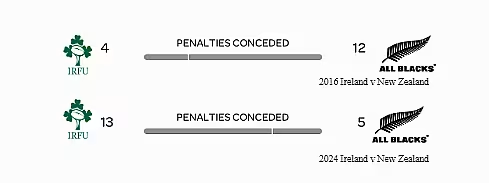
2016 Ireland v New Zealand v 2024 Ireland v New Zealand
Friday night painted a stark contrast. Ireland conceded 13 penalties, with the count potentially higher upon video review. The location of these penalties proved particularly costly - 10 penalties were given away in Ireland's own half. This generosity provided New Zealand with 7 penalty kick attempts at goal, of which they successfully converted 6, accumulating 18 crucial points.

Ireland needs to address how their defensive tactics and how its viewed by the referee. Throughout the game, Irish players repeatedly positioned themselves on the New Zealand side of the ruck after making tackles, attempting to slow down the All Blacks' ball. However, as the match progressed, the referee's growing frustration with this tactic became evident, yet Ireland failed to adapt their approach.



SEE ALSO: The Revamped Ireland Rugby 23 We'd Love To See For Vital Argentina Game
SEE ALSO: Scotland Legend Had Specific Issue With "Out Of Date" Ireland Buildup To New Zealand Clash
Ireland’s new go-to strike play
Ireland's attack went back into their playbook again Friday night, with a clever set play that had previously led to success. The same move that produced Conor Murray's crucial try from a goal-line dropout against South Africa in July was adapted for a first-phase lineout attack.
This time, James Lowe nearly broke through, only to be thwarted by an exceptional tackle from Ardie Savea.

Ruck Speed
Ireland maintained their trademark efficiency at the breakdown on Friday, continuing with their excellent ruck speed - a key factor in their recent success. While they generated quick ball from their own rucks, they also managed to slow New Zealand's possession, giving their defence time to reorganise. However, their tactics for disrupting All Black ball often strayed beyond the laws of the game.
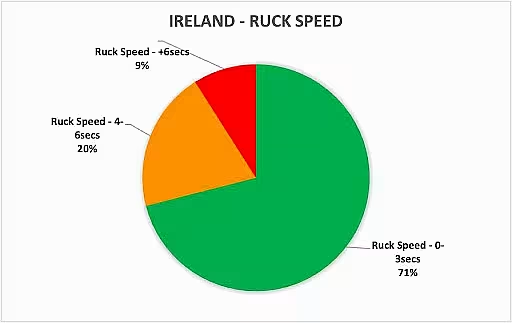

Bench Impact
The impact - or lack thereof - from Ireland's bench will be a significant concern for Andy Farrell and his coaching team. At the 57-minute mark, with Ireland narrowly leading 13-12, four changes were made as Henderson, Frawley, Herring, and O'Toole were introduced.
However, this shift in personnel failed to provide the intended boost, and matters were complicated when O'Toole was forced off with a head injury just two minutes later, requiring Bealham to return to the field. Perhaps most telling was that Ireland failed to add a single point to their tally after these substitutions were made.

Ireland’s kicking strategy
A key element of Ireland's kicking strategy cantered on carefully placed chips into midfield. This tactical approach specifically targeted the gap between New Zealand's two backfield defenders, with Mack Hansen designated as the primary chaser.
While the execution of these kicks was accurate, as evidenced by the game's kicking map, Hansen was unfortunate not to capitalise on several promising opportunities despite his effective pursuit.


Ireland’s kicking and landing spots.
Other Areas of Concern
The defensive workload Ireland faced on Friday night was enormous, with the team forced to make over 150 tackles. Such a high tackle count inevitably takes a heavy physical toll on players. While missed tackle statistics don't always tell the full defensive story, several of Ireland's unsuccessful attempts proved costly, allowing New Zealand to generate momentum in attack.
Particularly concerning was the All Blacks' success in gaining meters post contact. This ability to push through tackles and advance beyond the initial contact point is an area Ireland must address heading into their next three matches. They cannot afford to allow Argentina, Fiji and Australia the same kind of momentum if they want to return to their dominant defence.


Ireland's performance was also undermined by an uncharacteristic collection of errors: 21 handling mistakes, 5 lost rucks, 3 Lineout losses and 9 conceded linebreaks. This level of inaccuracy is rarely seen from this Irish team, and it would be surprising to see such a poor execution repeated in any of their remaining three November fixtures.
Ireland has little time to dwell on Friday's disappointment, with Argentina visiting the Aviva this coming Friday night. The Pumas arrive in decent form, having dispatched Italy comfortably on Saturday and impressed during the Rugby Championship with victories over rugby's southern hemisphere powers - South Africa, New Zealand, and Australia.
Andy Farrell is likely to give his established players who underperformed against New Zealand the chance to prove that Friday's display was hopefully just a one off. The opportunity to immediately return to winning ways should provide extra motivation for an Irish team eager to bounce back.



